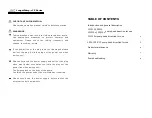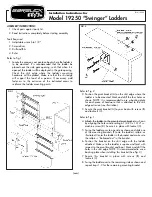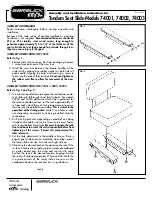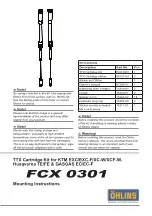
Cleaning, maintenance and repair
AD-P 30/35/4001 SPECIAL BAH0095-2 11.17
205
12.6.1
Inspection criteria for hydraulic hose lines before every start-up
Check the hydraulic hose lines for visible defects.
Repair any areas of chafing on the hydraulic hose lines and pipes.
Have any worn or damaged hydraulic hose lines immediately replaced at a specialist workshop.
12.6.2
Inspection criteria for hydraulic hose lines
using the maintenance schedule
Have hydraulic hose lines replaced by a specialist workshop when finding any of the following
inspection criteria during the inspection:
Damage to the outer layer up to the ply (e.g. scouring points, cuts, cracks).
Brittleness of the outer layer (crack formation of the hose material).
Deformations which do not match the natural shape of the hose or the hose line. Both in a de-
pressurized and pressurised state or when bent (e.g. layer separation, bubble formation, pinch-
ing, bends).
Leak points. Tighten the screwed connections if necessary.
Damage or deformation of the hose assembly (sealing function restricted); minor surface dam-
age is not a reason for replacement.
Movement of the hose out of the valve chest.
Corrosion of valve chest, reducing the function and strength rating.
Installation requirements not complied with.
Life span of 6 years has been exceeded.
The date of manufacture of the hydraulic hose line on the assembly plus six years is decisive. If
the date of manufacture on the valve chest is "2018", then the hose should not be used after
February 2024. For more information, see "Identification of hydraulic hose lines".
WARNING
Risk of infection caused by the high-pressure hydraulic fluid of
the hydraulic system entering the body.
Only a specialist workshop may perform work on the hydraulic
system!
Depressurize the hydraulic system before starting to work on the
hydraulic system!
When searching for leak points, always use suitable aids!
Never attempt to plug leaks in hydraulic hose lines using your
hand or fingers.
Escaping high pressure fluid (hydraulic fluid) may pass through
the skin and ingress into the body, causing serious injuries!
If you are injured by hydraulic fluid, contact a doctor immediate-
ly. Risk of infection!










































